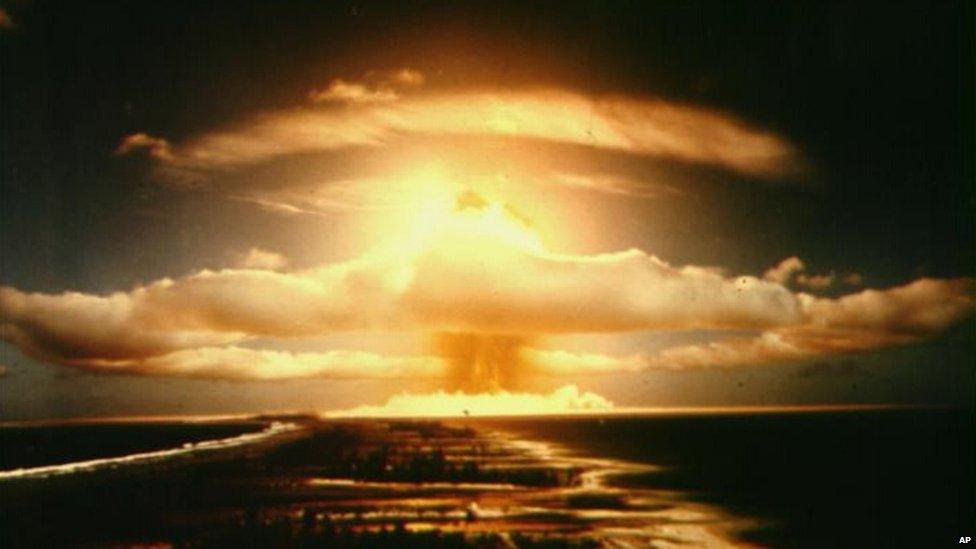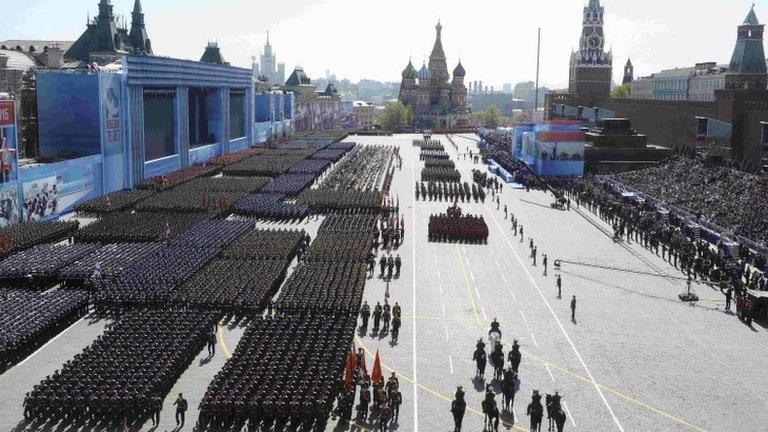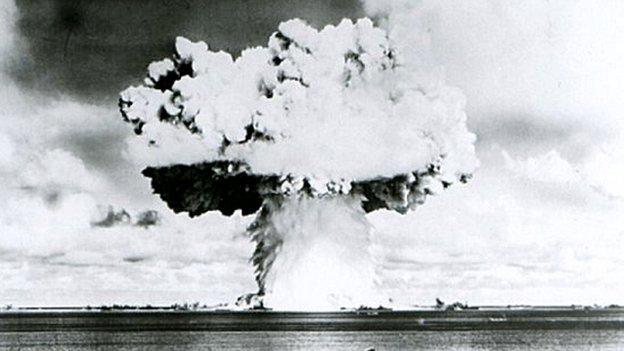Russia to display mega H-bomb copy in Moscow
- Published

The "Tsar Bomba" test created a gigantic mushroom cloud like this over the Arctic
Russia will display a replica of the most powerful nuclear device ever to be exploded - the Soviet "Tsar Bomba" - near the Kremlin in Moscow next month.
The AN-602 hydrogen bomb casings will be the main draw at an exhibition devoted to Russia's atomic achievements since 1945, at the Manezh centre.
The Soviet Union exploded the 58-megaton H-bomb in 1961 in the Arctic. It was about 3,000 times more powerful than the Hiroshima atom bomb.
A specially designed bomber dropped it.
The Tupolev Tu-95B bomber released the 26.5-tonne bomb from a height of 10.5km (6.5 miles) over the Arctic test range at Novaya Zemlya.
Russian media report that the shockwave circled the Earth three times, the fireball was 4.6km wide and the mushroom cloud soared to 67km.
The bomber's altitude plunged almost one kilometre because of the blast.
Nuclear pride
The bomb casings will come to Moscow from Sarov, a closed nuclear research town 465km (288 miles) east of the Russian capital. Visitors to Sarov require special permits, as nuclear warheads are developed there.
The exhibition, organised by the state corporation Rosatom, will be called "70 years of the atomic industry - a chain reaction of success". It will run from 1 to 29 September.
The bomb also had the nickname "Kuzma's Mother" - from a Russian expression that translates as "we'll teach you a lesson".
The idiom was used by Soviet Communist leader Nikita Khrushchev with former US Vice-President Richard Nixon in 1959, during the Cold War nuclear arms race, Russian media report.
The Manezh exhibition will also feature personal effects of famous Soviet nuclear scientists, formerly secret documents from Soviet archives and models of nuclear reactors and a nuclear-powered icebreaker.
- Published16 June 2015

- Published9 May 2015

- Published15 March 2015

- Published23 February 2015
